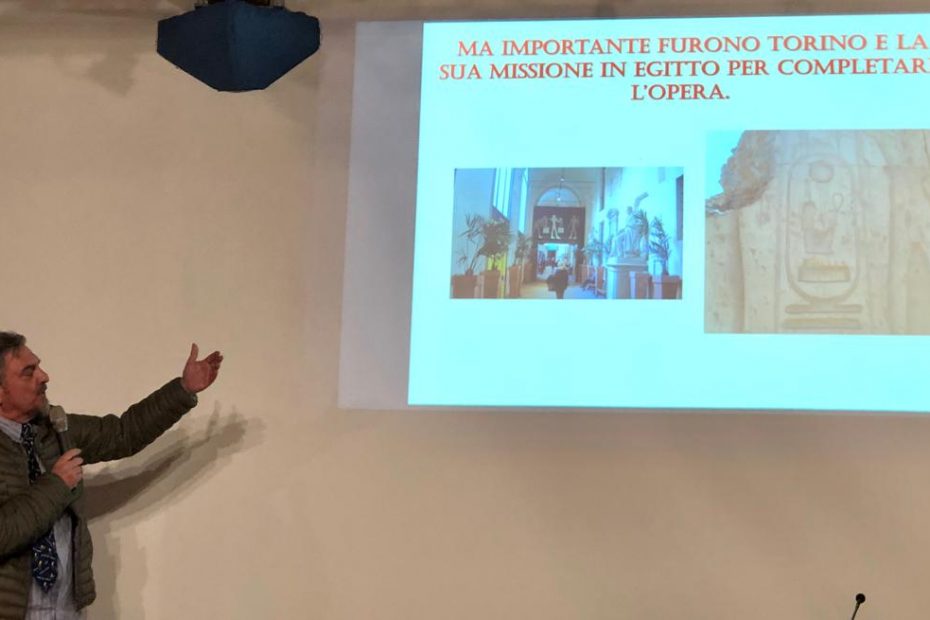14 September 1822: “Je tiens l’affaire” shouted the French Egyptologist Jean-François Champollion (Figeac, 23 December 1790 – Paris, 4 March 1832) excited by the rebus solution to extract the Egyptian idiom from the inscription engraved on the granite stele unveiled on July 15, 1799 in Rashid (or Rosetta) by the Capitán Pierre-François Bouchard (Orgelet, April 29, 1771 – Givet, August 5, 1822).
“The exploration of pyramids – says the archaeologist Ferdinando Caputi (national director Cisrei Italy) intervened at the International Cultural Pole of Marengo – was substantial to decipher the method of writing carved on monumental structures in Ancient Egypt. The competition of scientists sent by the Egyptian museum in Turin was fundamental to translate hieroglyphs (ideographic, syllabic, alphabetic signs suggested by nature). The exegesis emerged from the work undertaken for more than thirty years by the team of savants enlisted by the General. Ancient Egypt is always covered with mystery. The investigation is eternal and spreads the Middle Eastern culture to the twenty museums of Egyptian antiquities extended from Africa, the United States of America and Europe”.
Symbolism unites Egypt to the plateau of Fraschéta: the Egyptian pyramid, the most obvious icon of the building dedicated to the dead, inspired Napoleon to order to build in Marengo the mausoleum equipped with a room with marble tables engraved by the name of every soldier fallen on the battlefield (14 June 1800). The disregarded decree was then revered by the more modest structure opened since 2009.
“Napoleon’s Campaign of Egypt and the discovery of the Rosetta Stone” is the title of the dissertation presented by the illustrious speaker at the talk “Thursday at Marengo”. The meeting was promoted to unite the Marengo brand to the European tourist circuit and to receive a positive feedback.The vast area of Alessandria is extended by the last spurs of the Ligurian Apennine chain to the Po Valley, that yesterday was crossed by the dialogue descended from the nomadic crowd on the Marenche streets built to connect Liguria to Piedmont and Europe. Today it is a locus elected for nourish the spirit: the knowledge spread by history
